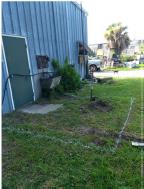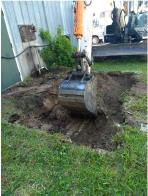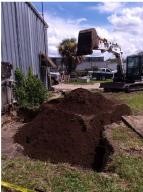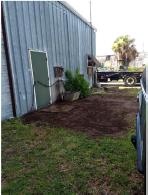



There are times when, based on the site assessment results, the most cost-effective method of addressing contaminated soil is through source removal via soil excavation. Typically, the excavation involves the removal of soil for disposal, reuse, or treatment. Most often, the excavated soils are removed from the property and sent to an approved offsite treatment/disposal facility. Excavation can be used in all phases of a remediation, including the assessment of subsurface site conditions, construction, and site closure.
We have often found that excavation works best and is most cost-competitive at sites where confining layers are shallow, soil permeabilities are low, the volume of source materials is under 5,000 cubic meters, and the contaminants do not require complex treatment or disposal. The advantages of excavation include:
- Source materials that can continue to contaminate the groundwater are removed quickly.
- Contaminant migration from the unsaturated source area stops as soon as the excavation is completed.
- Excavation can compare favorably in cost and timeframe to in situ treatments where source areas are small and easily defined.
Before a source removal is performed, MAS employees determine the parameters of the excavation area, including depth, length and width based on prior sampling activities.
MAS will also identify the site’s soil type, areas that may be difficult to excavate, and the depth to the water table. Implementation of methods to control or prevent the movement of groundwater into the excavation may be required.
Depending on the area of excavation, soils can be excavated using backhoes, front loaders, continuous excavators, large diameter augers or other approved methods. During excavation, when necessary, MAS installs bracings, steel sheeting, and/or trenches to maintain the integrity of any structures in the immediate area and to maintain safety requirements.
As the contaminated soils are excavated, they may be loaded onto trucks or in containers for removal from the site, or moved to a site staging area for additional testing or temporary storage prior to removal.
Our highly trained staff members will ensure that excavation activities are performed in a safe and efficient manner with the least possible amount of disruption to business activities.
Once the removal activities are complete, MAS will restore the site back to a similar condition.
